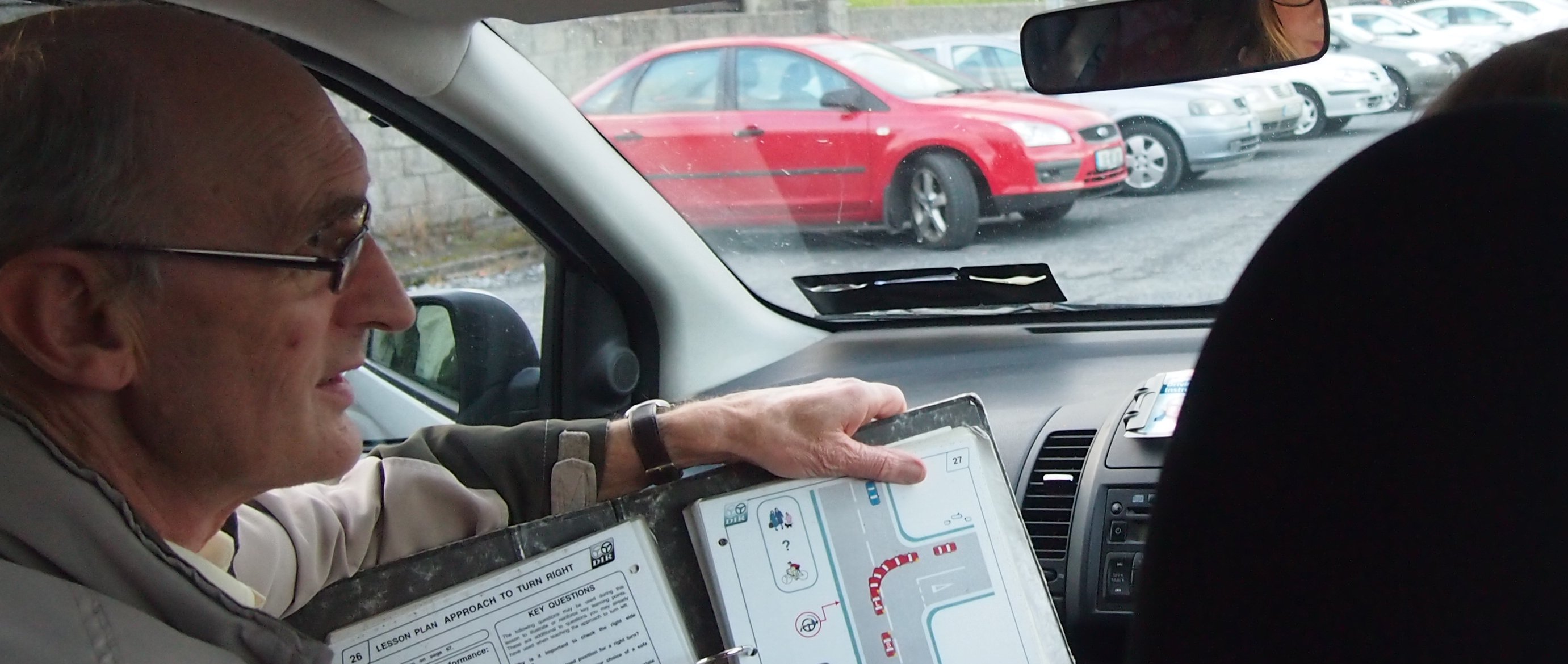Student Information
Questions that may frequently be asked on a driving test

-
When can you overtake on the left?
You can overtake on the left when:- the vehicle ahead is turning right and there is sufficient space on the left or
- the traffic in the right lane is moving more slowly than the traffic in the left lane or
- when you intend turning left a short distance ahead (e.g. at a filter light).
-
Can you stop in a yellow box junction?
Yes, but only when turning right and your position is not causing an obstruction. -
What is the procedure if you are dazzled by oncoming traffic at night?
Slow down, then look out along the left edge of the road and be prepared to stop if necessary. -
What must you do when a full amber light comes on at traffic lights?
Stop, if it is possible to stop safely. -
What rule applies where there are zigzag lines?
No parking or overtaking permitted. -
What is the minimum legal limit for tyre thread depth on a car?
1.6 mm -
What does the single yellow line on the left hand side of the street mean?
No parking during business hours. -
What does the continuous white line in the centre of the road mean?
It's not to be crossed except for access or in an emergency. -
Is it ok to park on the left hand side of the road when there is a continuous white line in the centre?
No. -
The driver is legally responsible for the wearing of seat belts, up to what age?
Up to and including 16. -
How would you recognise a zebra crossing at night?
The flashing amber beacons / lights. -
What is the procedure when approaching a junction with roads joining of equal importance?
Approach with caution and give way to traffic on the right or already on the junction. -
What is a contra flow bus lane?
A bus lane which is running in the opposite direction to the flow of traffic and must not be used by other vehicles. -
When should you drive with dipped headlights?
Use dipped headlights when:- driving at night for oncoming traffic or
- following behind traffic or
- driving during periods of dawn and dusk or
- in a built-up area where there's street lighting or
- in weather conditions such as snow, fog or in any dark conditions (e.g. when raining).
-
Where would you find flashing red lights on a roadway?
At an automatic level crossing. -
What should you do when being overtaken by another vehicle?
Do not accelerate. -
What is the correct road position when approaching to turn right off of a one way street?
Either in the rightmost lane or where there is no right lane, on the right side of the road. -
What speed should you be doing when approaching a bend or brow of a hill?
A speed which will allow you to stop safely within the distance you can see ahead of you. -
What is the speed limit on a dual carriageway?
100 km/h. -
What is the two second rule?
Ensure you maintain at least a two second gap between your vehicle and the nearest one ahead of you. Double this in wet or greasy conditions. Remember: "only a fool breaks the two second rule." -
What is the purpose of the right hand lane on a dual carriageway or motorway?
It is for overtaking. -
What are count down signs on a motorway?
They indicate 300m, 200m and 100m to the next exit. -
Can you drive on the hard shoulder on a two way roadway?
If desired you can drive on the hard shoulder temporarily to facilitate an overtaking vehicle, provided it is safe to do so. -
What is the maximum parking distance from a kerb?
45 cm. -
What is the procedure when approaching a roundabout?
Check mirrors, ensure correct signalling and road position, prepare to stop and do not cause any obstruction to traffic approaching from the right. -
What light follows red at a pelican crossing?
Flashing amber. -
What's the procedure at a pelican crossing when the lights are flashing amber?
Proceed with caution if no pedestrian is crossing. -
What do double broken white lines along the centre of the road mean?
They alert drivers to the presence of a continuous white line/lines ahead. -
What is the correct road position when on a one-way street and you intend to turn right onto a minor road ahead?
In the right-hand lane or the far right hand side of the one-way street. -
What is the correct speed when approaching a bend or humpback bridge?
The speed that allows you to stop safely within the distance you can see in front of you. -
What is the speed limit when towing a horsebox on a motorway?
80kph.